20. April 2021 22:08 by Christian in
EMC/EMI, EMC TEST PLAN One common mistake in EMC Test Plans is to associate Pass/Fail criteria with DUT Operating Modes.
For Operating Modes it is critical to define how DUT's:
1) Load Simulator & Support Equipment is configured.
2) Functions are activated.
3) Behavior is monitored.
4) data is collected and reported.
Defining Pass/Fail Criteria for a particular Operating Mode maybe in conflict with requirements listed by automotive OEM EMC spec or standard. The DUT performance and response behavior will always vary depending on the Test Method.
Based on Functional Status Classification the Pass/Fail Criteria must be specified for each Test Method while the DUT is activated in a particular Operating Mode.
For example, ISO 7637-2 Pulse #1 (t2 is 0V for 200 ms). I doubt that an E-Net port won’t miss data packets generating bit errors under such circumstances. Depending on the Test Method and required immunity severity level the EMC spec/standard would allow certain self-recoverable DUT anomalies. Since the EMC Test Plan can override the EMC spec requirement would be a mistake to mention something like "no loss of E-Net data packets" as pass criteria for "DUT Operating Mode #1". This would imply that loosing one packet of data during Pulse #1 the DUT "fails" when in fact the EMC spec would allow it:
"One or more functions of the DUT can go beyond specified tolerance provided that all functions return within normal limits after the exposure is removed (e.g., after UA power is re-applied after the 200 ms defined by t2 as defined in ISO 7637-2). No damage or degradation of memory functions is permitted."
Based on FMC1278R3 and CS.00054:2018 Production Representative Hardware and Software should be used for all verification testing unless approved differently by OEM via EMC Test Plan.
The Production Representative Test Sample is built using production representative hardware and software constructed using production representative processes, tooling, etc.
Following Software Changes in addition to PCB Changes re-validation for test methods like ESD, CISPR 25 RE, BCI, RI ALSE , Hand Portable Transmitters, Transients, Voltage Dips and Dropouts may be required.
FMC require DV testing to be performed using production representative components but not necessarily components constructed from production tooling.
EMC DV1 Testing for PCM (Powertrain Control Module) is normally performed with test software mutually agreed to by FMC D&R, EMC and the supplier.
EMC DV2 Testing for PCM must be completed using Production Intent Hardware and the latest available Application Software.
FCA require DUT Validation Testing done on Production Intent Samples using Production Intent Hardware and Software.
Production Intent Components must be used for the inputs and loads including switches, sensors, pulse width modulated loads, solenoids and motors.
The DC Power Supply should be selected as follows:
Rs (Internal Resistance) < 0.01 OHM DC
Zs (Internal Impedance) = Rs for frequencies < 400 Hz.
Output Voltage:
▶ does not deviate more than 1 V from 0 to maximum load (including inrush current)
▶ recovers 63% of its maximum excursion within 100 ms
Vr (Superimposed Ripple Voltage):
▶ does not exceed 0.2 V peak-to-peak
▶ maximum frequency of 400 Hz
NOTE:
☞ When a battery is used for EMC testing, a charging source is needed to achieve the specified voltage reference levels.
☞ It is important to ensure that the charging source does not affect the test.
☞ Linear Power Supplies are preferable vs Switching Power Supplies.
☞ Prior to CISPR 25 test methods ensure that the RF noise produced by the power supply is at least 6 dB lower than the limits specified in EMC Test Plan.
☞ If the Power Supply is located outside of the EMC test chamber, ensure thzt a bulkhead RF filter is used to prevent RF noise from entering or leaving the shielded enclosure.
☞ If using a HV battery, then it must be contained in a shielded enclosure.
☞ 12V Power Supply Volatge = 13.5 (+0.5/-1.0)V
☞ 24V Power Supply Voltage = 26 (+1.0/-2.0 V
A few remarks on correct Load Simulator configuration for CISPR 25 Conducted Emissions Current test method.
First of all you have to show the LISN in your EMC Test Plan block diagrams. The way the LS is connected is not identical for each CISPR 25 test method. I will never use a Load Simulator unless is no other way around or I would want to turn it into a RF filter box. Examples of CEI good and bad setups are shown below:
CEI WRONG CONFIGURATION
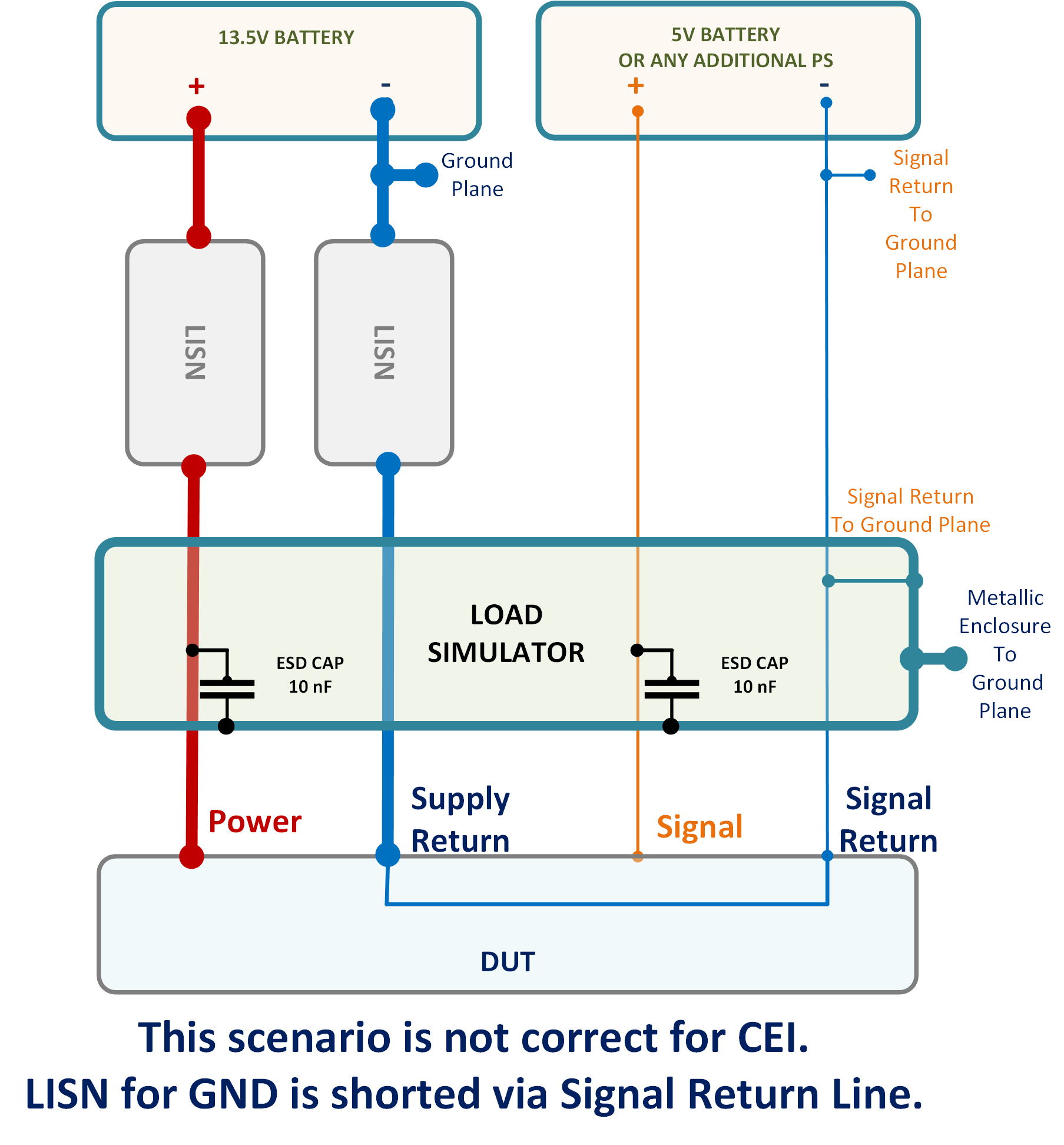
CEI GOOD CONFIGURATION
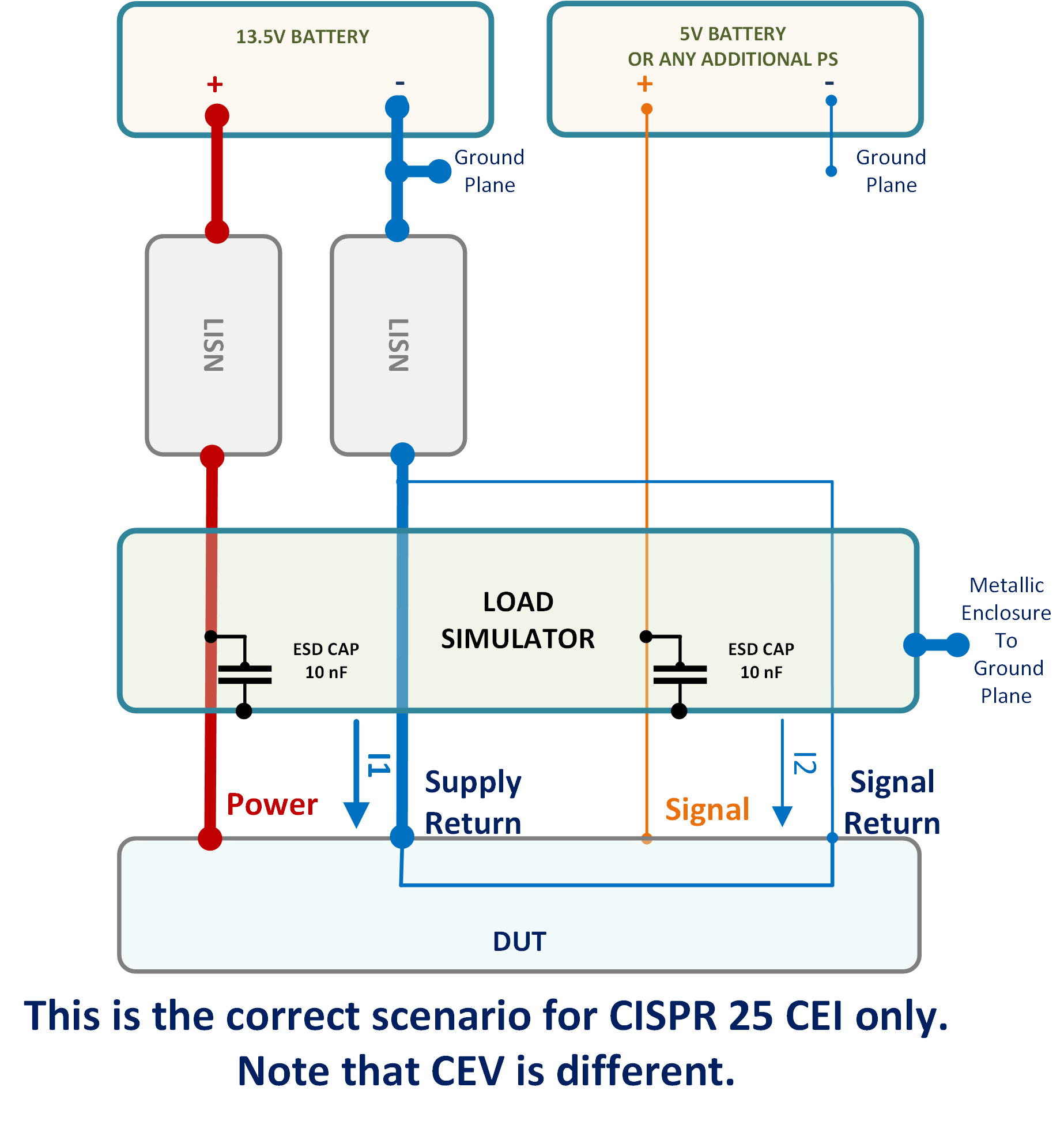
To clarify how a PWM maker is connected:
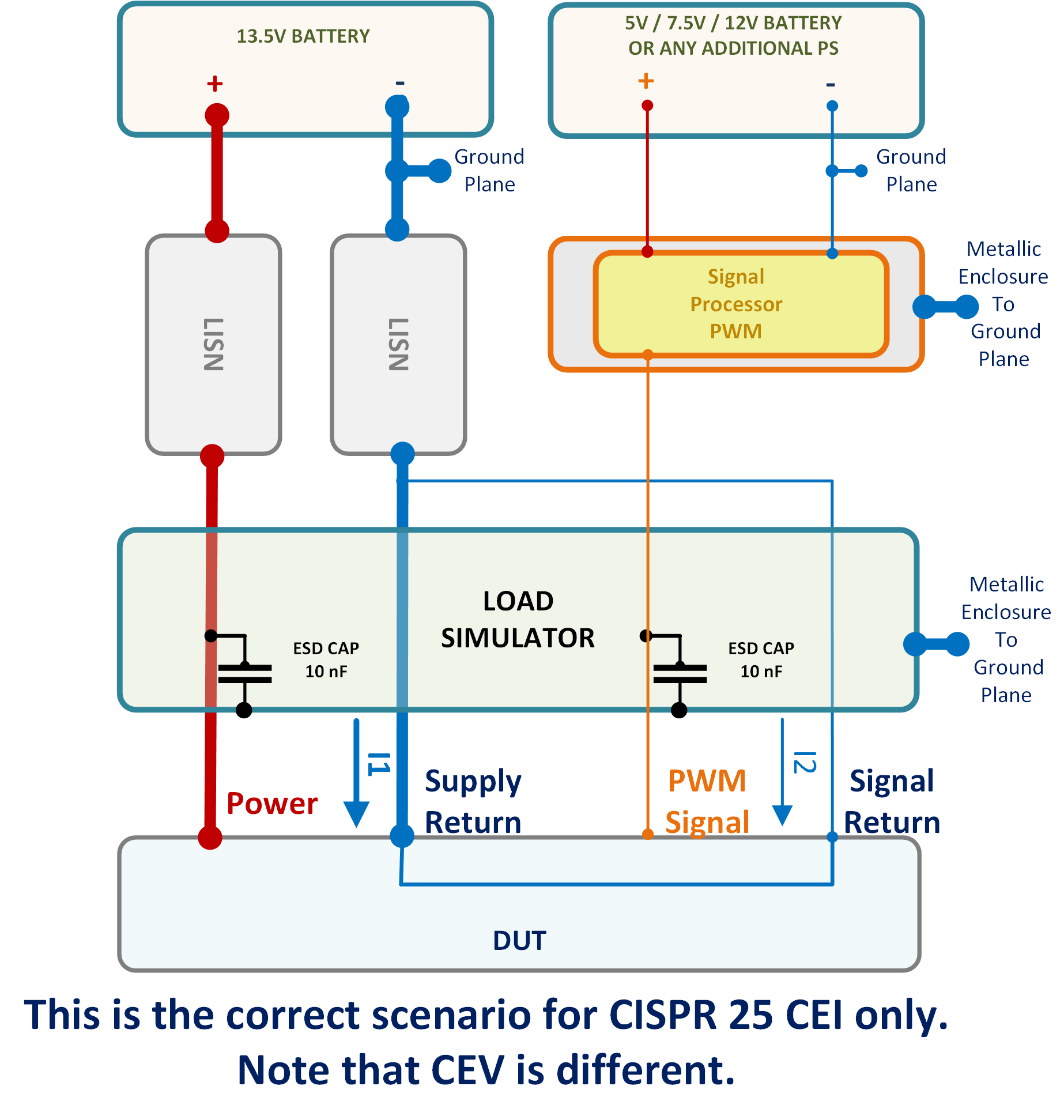
From EMC compliance perspective the goal is to avoid as much as possible common line impedances:
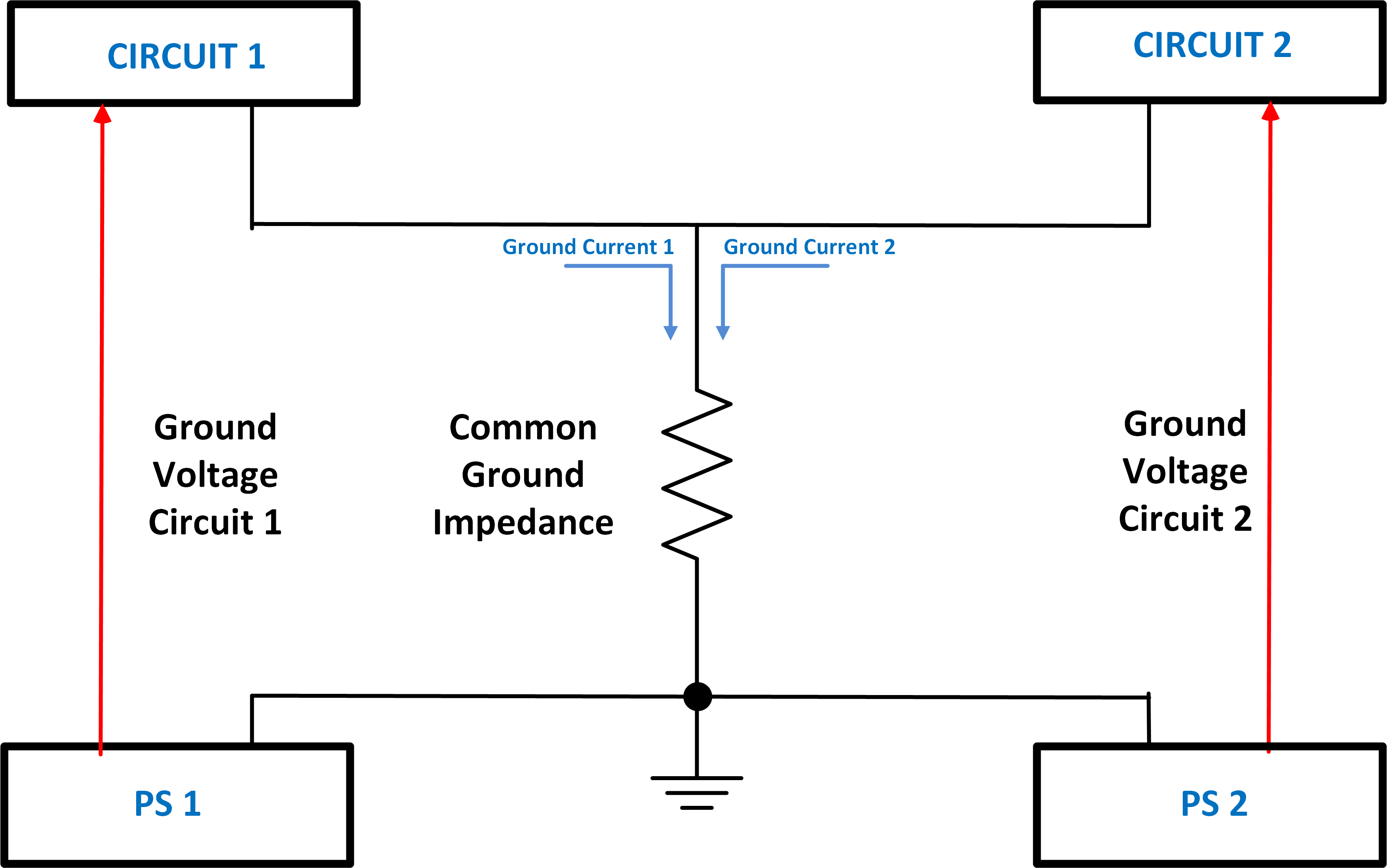
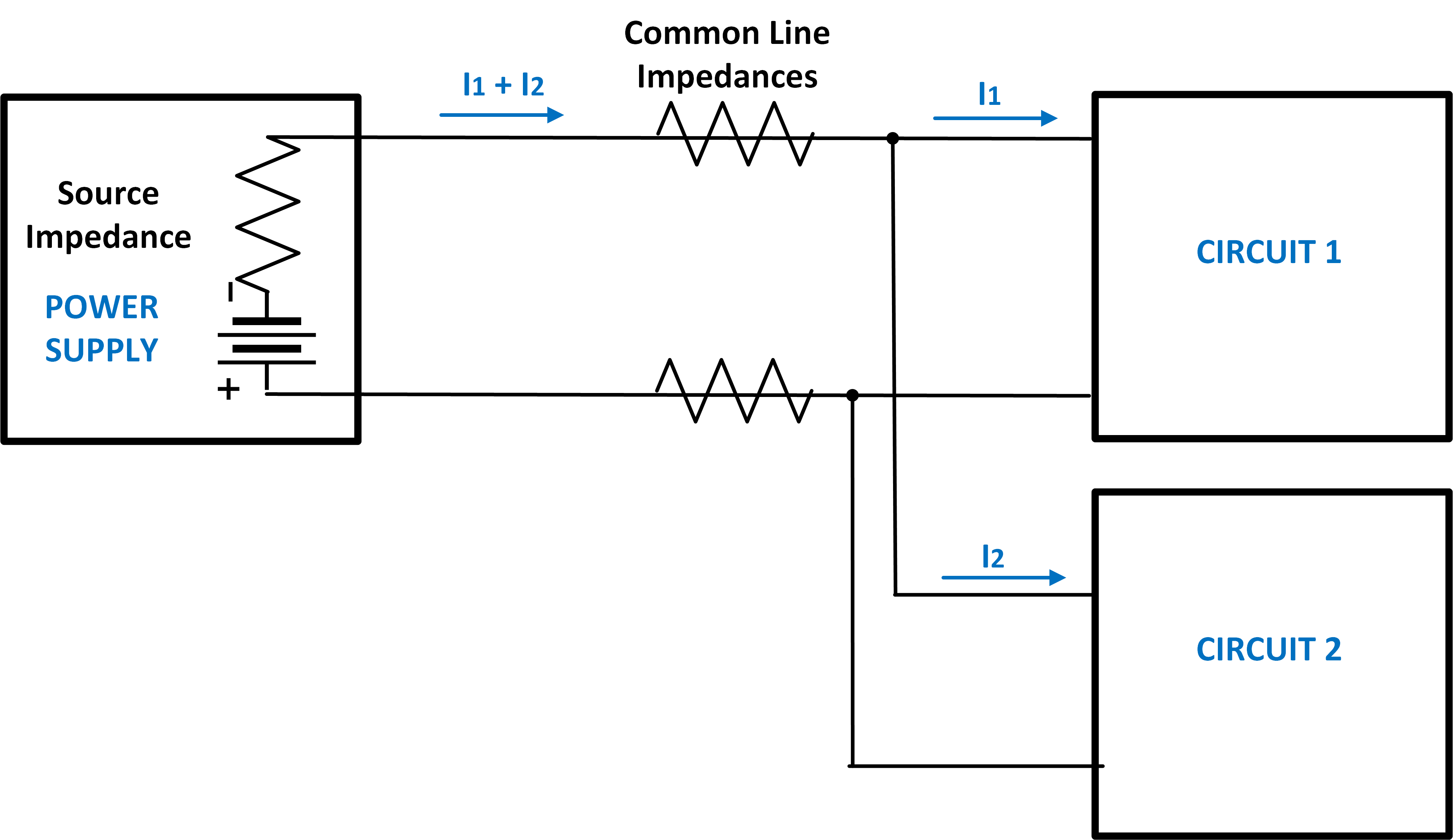
Christian Rosu
2021-04-13
The DUT Performance Functional Verification is based on a bench test software that does not account for EMC specific considerations and is normally performed prior and following each EMC test method.
Using the same Activation & Monitoring Method and Pass/Fail Criteria for ENV and EMC is not practical. DUT’s functions must be grouped in “operating modes” that are in line with the scope of EMC Test Method. When assessing the level of RF emissions we want the DUT to exhibit the highest level of noise possible as in vehicle. During RF Immunity evaluation we expect the following from a good activation/monitoring software:
- Capability to activate and have realistic data traffic on all I/O lines as well as individual I/O lines.
- Electrical Transients or RF coupled in supply voltage and I/O lines may not always trigger repeatable anomalies. Therefore we need a visible flag/indicator to immediately stop the actual EMC test method process for anomaly thresholding (e.g. level vs frequency). As we reduce applied stress level the DUT’s behavior may change, then at some point the anomaly should disappear.
- The same DUT operating mode may be feasible for one or more EMC test methods but definitely not for the entire test list. We need capability to configure what functions belong to each operating mode including live monitoring method. Log files are not useful during test, we still need them following the test for troublesooting.
- All functions must resemble vehicle intent usage. Not all I/O lines will be active simultaneously in vehicle. Therefore do not use unrealistic I/O cables scenarios to facilitate testing since this can generate false current loops and other issues.
- The functions used by DUT activation & Monitoring Software are not meant to assess complaince to USB, E-Net, LVDS standards.
Keep in your mind that:
- Electrical Transients on supply lines can hard reset the MCU (e.g. dips/dropouts). Is there a test in your monitoring software that captures such condition? Any other anomaly is not relevant once a hard reset occurs.
- Do you have a function to verify that there is no memory loss following inadvertent hard/soft reset?
- The RF can be coupled in both supply lines and I/O lines resulting in data traffic interruptions leading to a soft reset. Is there a monitoring function to capture such event?
- If CAN bus is used in a design I would consider at minimum two critical errors: CAN BUSOFF & DTC SET. What we normally use is a pass fail criteria that can be adjusted such that is possible to determine if the anomaly occurs with every data transmission attempt or it happens only each 100/1000 attempts.
DUT support software
Do not waste time/money to tweak operating modes during EMC validations. In many EMC labs the cost for one hour of ALSE chamber is $500 regardless to how you spend this time. The operating mode must be pre-selected, yet adjustable if needed during troubleshooting. The "anomaly found" visual indicator is used by EMC test operator to stop the actual EMC test software. If we have a time stamp in log files, there is no need to stop the activation/monitoring support software.
DUT Activation Dwell Time
All functions within the same operating mode must be completed and repeated every 2 seconds. We call these 2 seconds Dwell Time, and it can make a huge difference in test duration and cost. For a 2-second dwell time and only one Operating Mode you can expect RF Immunity in ALSE chamber to last 4-5 days (one shift). For a 4-second dwell time it may last practically 8-9 days and so on. Bottom line, if the initialization of Load Simulator or DUT is time consuming it will cost a fortune to re-initialize following each incident/anomaly. Hard/soft reset must always be the last resort to resume operation. The goal is to minimize the number of operating modes and DUT orientations.
Types of DUT support software
- Load Simulator EMC support testing software with specific sections for each Operating Mode.
- Load Simulator Functional/Parametric verification testing done before and after each Test Method.
- Full DUT Functional/Parametric testing before and after full EMC validation that is not typically done using the EMC Load Simulator but rather EOL like testers.
DUT Operating Mode
Ideally is to include in Operating Modes only those DUT functions that are active while driving the vehicle. Functions used for diagnostics at the car dealer shop are not relevant. The worst case scenario is when vehicle is in Run Mode (speed >0) but we also have to simulate the Standby Mode (speed = 0) and Sleep Mode (current consumption < 1 mA).
Christian Rosu, Jan 12, 2021